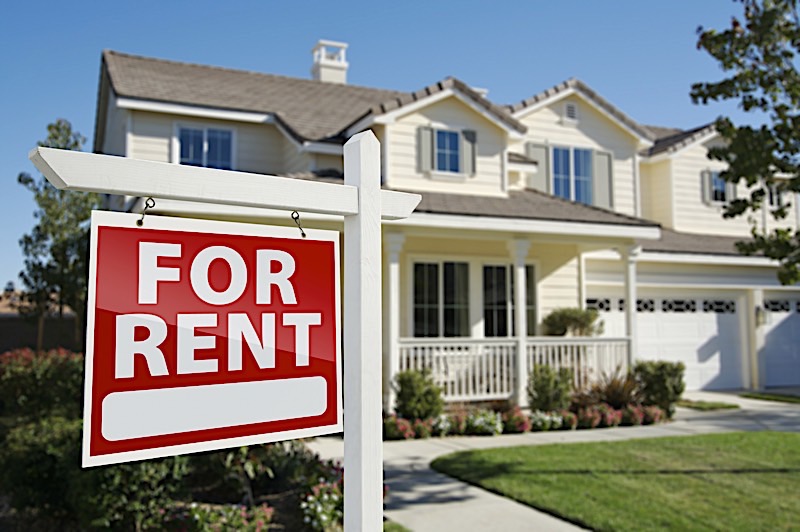The Investor’s Guide To Buying Multiple Rental Properties
By Than Merrill
Passive investing has become synonymous with today’s greatest retirement vehicles. Few exit strategies can build wealth on the same level as a properly assembled rental property portfolio. It is also worth noting that the benefits of passive income investing can compound significantly with each additional property added to a respective portfolio.
With the right pieces in place, there’s absolutely no reason savvy investors can’t continue to add cash flowing properties to their rental portfolios, all without adding to their current workload. Therein lies the true benefit of buying multiple rental properties: investors may capitalize on the profits from several assets without putting in any more of their own time or effort. That said, buying a single asset isn’t the same as knowing how to buy multiple rental properties. While there are certainly similarities, investors who want to build a portfolio need to know how to best scale their efforts.
How To Buy Multiple Rental Properties
Buying multiple properties may sound intimidating to those who are just starting out in the industry. However, much like every other business endeavor, the process can be made simpler if it’s broken down into individual steps. In an attempt to simplify the process of buying multiple investment properties, here’s a step-by-step guide to use as a reference for building your own portfolio:
- Define The Endgame: The first thing investors need to do before they buy their first rental property is to clearly and definitively define their goals. Are you looking to retire early? Do you merely want to supplement the income of a full-time job you intend to keep? Better yet, do you want to build a portfolio that serves as a wealth-building legacy for your family? What you hope to accomplish will ultimately dictate how your portfolio should be built. Therefore, you need to define your goals in order to formulate plan.
- Leverage Someone Else’s Money: The ability to buy real estate with someone else’s money, whether it’s a bank or private lender, is one of the greatest benefits of real estate investing. In securing funds from another party, investors are not only able to buy sooner rather than later, but they are also able to avoid completely tapping their own reserves. Those looking to buy their first rental property should strongly consider borrowing the funds. More specifically, however, look for a loan that suits your goals and needs. There are many different types of loans, all of which will be explained in more detail soon.
- Take The First Step: Once funding is lined up, investors need to buy their first asset; they need to learn how to walk before they can run. In doing so, investors should focus on their first acquisition. Proceed to look into buying an asset that gets you one step closer to the goals we previously discussed. This can get tricky, as many new investors tend to look at a lot of subject properties through “rose-colored glasses.” However, investors need to refrain from purchasing with emotions and focus on the numbers. Do the numbers make sense for what you hope to accomplish? Is the home in a good location to produce cash flow year after year? Once you are positive the numbers make sense, take the first step and buy your first rental.
- Work With A Mortgage Broker: Borrowers become more of a risk with each mortgage they add to their portfolio. Banks simply assume that if a default were to happen, subsequent mortgages would be neglected in favor of their primary residence. It is safe to assume not every lender is willing to work with borrowers who already have a mortgage; they don’t appreciate the added risk of default. There are, however, options: mortgage brokers are most likely your best source for finding willing lenders. Hiring a mortgage broker will cost more upfront, but their services could be the thing that helps you acquire your next property.
- Use Your Portfolio As Leverage: Once you have added several properties to your portfolio, you can start leveraging your assets. If you can prove that you are successfully able to manage multiple properties and continue to meet mortgage obligations, banks will feel more comfortable lending to you, no matter how many mortgages you currently own. Once you have proven to be financially “responsible,” the likelihood of receiving subsequent loans will increase and help in building a larger portfolio.
[ Want to own rental real estate? Attend a FREE real estate class to learn how to invest in rental properties, as well as strategies to maximize your cash flow and achieve financial freedom. ]

How To Finance Multiple Rental Properties
Buying multiple investment properties will require investors to seek out creative ways to finance their impending deals. If for nothing else, banks will view multiple loans as a greater risk than a single loan. At the very least, borrowers are more likely to default on subsequent mortgages than their primary residence. That said, financing multiple rental properties is possible, but borrowers will need to prove they are worth of multiple loans.
The more homes you look to finance, the more you’ll need to prove you can handle the extra burden of carrying debt. Those who are looking to carry four or fewer mortgages, for example, could get away with a credit score somewhere in the neighborhood of 630 if they are able to put 20% down. Smaller banks looking for business may even be a little more lenient with their lending guidelines.
Those looking to finance more than four homes will need to prove their worth even more. It’s not uncommon for banks to require credit scores in the mid 700s for those who want to obtain several loans. Not only that, but borrowers will need at least six months of reserve funds to act as a buffer against vacancies (or even default). The amount expected to be put down at signing will also increase, as to mitigate the risk taken on by the bank.
Expert Tips For Buying Multiple Properties
Provided you haven’t already purchased several rental properties of your own, there will be a learning curve associated with the process. Finding and acquiring real estate is a skill; one that may be honed over time. Those that dedicate themselves to the craft have likely already noticed there are ways to do things, and ways to not do things. For some tips on how to go about buying multiple rental properties successfully, please reference the following:
- Clearly Define Your Objective: Before you even consider buying multiple rental properties, you need to have a firm grasp on what you hope to accomplish. The quickest path to success is with a game plan and a strategy to realize your own goals. That said, you can’t possibly know how to quantify success without defining what success would be for your own situation. You need to know what you hope to accomplish in order to devise a rental property strategy.
- Listen To What The Numbers Are Saying: Math is—in and of itself—a universal language; it communicates in an objective view unlike anything else. In the real estate industry, in particular, numbers tell a story worth listening to. Investors looking to build a rental property portfolio can’t get caught up in making emotional decisions and, instead, need to base each of their decisions on the numbers of a respective deal. Numbers provide transparency, revealing whether or not a deal is good or bad. Your portfolio should, therefore, be comprised of each of your investment asset’s own numbers: purchase price, transaction/holding cost, profit, repair cost, sales price and more.
- Allocate Assets Based On Risk Tolerance: Building a profitable rental portfolio is contingent on no less than several important factors, not the least of which is the ability to evaluate one’s own risk tolerance. Not all assets are created equal. While some rental properties are as close to a “sure thing” as you can possible get, there are those with quite a bit of built-in risk. Whether it’s the location in which a property is situated or hints of a new development that might break ground in the neighborhood, there are a number of factors that will contribute to an asset’s propensity towards risk. As an investor, it’s in your best interest to evaluate how comfortable you are making certain risks, and whether or not they are worth taking to realize your ultimate goal. At the very least, each rental property added to your portfolio needs to get you one step closer to your goal.
- Work With A Property Manager: More rental properties typically coincide with additional work. The more properties included in a rental portfolio, the more hours that must be spent managing them. It is worth, noting, however, that investors don’t need to be the ones managing their rental properties. Third-party property managers have made a rather lucrative business out of managing other investors’ portfolios. That said, I highly recommend aligning your services with a property management company in the event you decide to buy multiple rental properties. Not only will their presence make owning rental properties easier, but it’ll free up your time to add more assets to your portfolio.
- Don’t Over-Leverage Your Debt: Rental properties build wealth in three very specific ways: They tend to appreciate in value more often than not, they provide monthly cash flow, and they allow investors to leverage money. The latter of the three is nothing if not a double-edged sword. Leverage is certainly a great benefit that allows its users to maintain a more liquid position, but over-leveraging can lead to financial ruin. Therefore, you need to be careful about the amount you are comfortable borrowing. The minute you stretch yourself too thin, you will notice profit margins disintegrating.
Summary
Buying a single rental property awards savvy investors the ability to build wealth passively. Buying multiple rental properties compounds the benefits associated with passive income investing, and opens investors up to the idea of financial freedom. A properly curated rental property portfolio, on the other hand, is something just about every real estate investor strives for. In order to realize financial freedom, you need to take the leap from buying one asset to learning how to buy multiple rental properties.
Key Takeaways
- Few exit strategies can build wealth on the same level as a properly assembled rental property portfolio.
- Much like every other business endeavor, the process of buying multiple rental properties can be made simpler if it’s broken down into individual steps.
- There are several tips investors need to keep in mind if they want to learn how to buy multiple investment properties with a large degree of success.